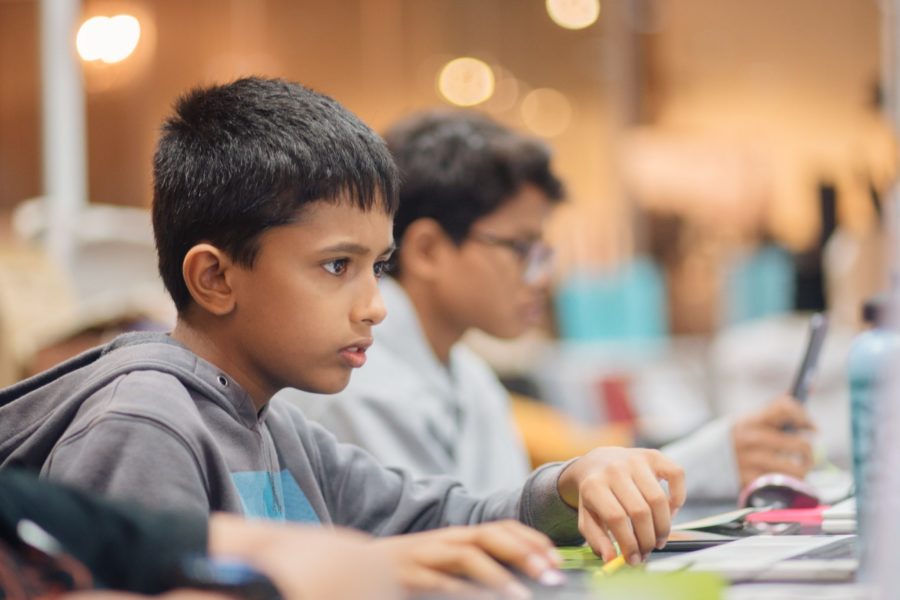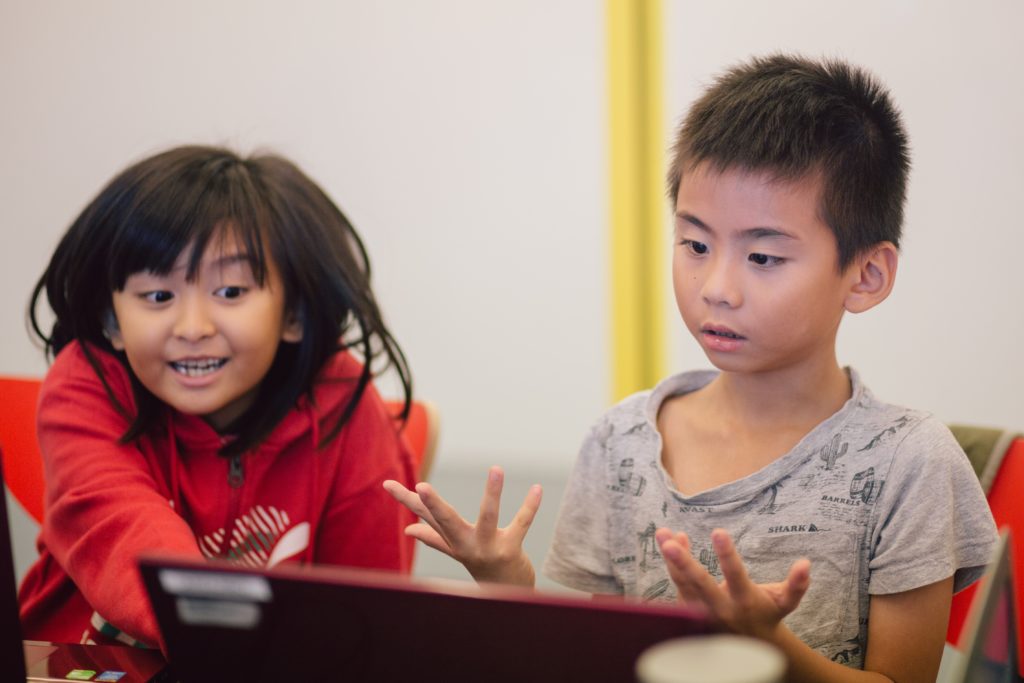The post Going Back to Basics: What Kids Learn through Programming with Python appeared first on Saturday Kids | Coding, Digital Literacy for Kids & Parents.
]]>Leveraging design thinking, kids will learn to programme their own projects while developing an evolving understanding of their relationship with the technological world.
Curriculum developer Swe shares more.
In Back to Basics, kids don’t just learn how to programme with Python but about computational thinking. Computational thinking is quite the buzzword these days, but what is it really about?
“Learning computational thinking involves playful experimentation. Trying new things, tinkering with code or hardware, testing boundaries, taking risks, iterating again and again. We live in a world that is changing more rapidly than ever, and almost any form of success hinges on our ability to think and act creatively. That’s what computational thinking help you with.
Today’s young people will be confronted with new and unexpected situations throughout their lives – they have learn to deal creatively with uncertainty and change. Problem-solving techniques taught under computational thinking can help them do that.”
That makes sense. Why should kids ages 11-14 start learning to code with Python?
“Python is the tool we use to help kids them apply computational thinking. We also chose it because it’s a very simple programming language that’s easy for beginners to pick up. It’s very extensive because of its libraries, so you can do lots of things with Python like Artificial Intelligence (A.I.), web development, and game development.

Libraries are basically code written by other people. Let’s say you want to do something with advanced statistics but lack the background for that. With Python, you can use a software library that someone else has written to do something complicated like regression analysis. All you’ll need is the inputs that you want to plug in, and you’ll get an output.
Compared to other programming languages like Java, you won’t get as many errors because the syntax is simple and easy to understand.
If you’re completely new to programming, it’s still going to be a bit intimidating at first. But you can start making pretty complicated things faster than if you were to use other programming languages.”
What’s the coolest thing you’ve built using Python?
“During university, I picked up Python to build a small self-driving car. It was very frustrating but also rewarding. At that time, I knew next to nothing about computer vision or deep learning, but I could make use of the OpenCV and Tensorflow Python libraries to easily build a self-driving car.

With Python, you can also automate scripts. That can cut down on Excel work you might otherwise have to do for a whole day, reducing it to a couple of hours.”
Back to Basics: From Zeroes to Python Heroes is designed for kids ages 11-14 with or without any prior coding experience. A hands-on introduction to the world of text-based programming, kids develop their computational thinking abilities with Python as their medium – discovering what it means to apply the language to meaningful real world applications in the process.
This course is currently available as a 5-day holiday camp, or as a weekly class on demand. Check out our schedule or contact us to find out more.
The post Going Back to Basics: What Kids Learn through Programming with Python appeared first on Saturday Kids | Coding, Digital Literacy for Kids & Parents.
]]>The post Coding vs. Programming vs. Computational Thinking – What’s The Difference? appeared first on Saturday Kids | Coding, Digital Literacy for Kids & Parents.
]]>Before I answer that question, I would like to throw ‘computational thinking’ into the fray and spend the rest of this blog post dissecting these three terms so parents get a better understanding of what each one means.
Coding versus Programming
This is one of those questions that splits opinions. There’s a camp out there which advocates that coding is low level work – basically translating logic into code (another word for programming language) so that your application can run. Programming is higher order work – designing logic to solve problems. This camp can basically be summed up in four words – ‘Coders cheap. Programmers expensive.’
The other camp, unsurprisingly, argues there is no difference between coding and programming. Engineers, coders, programmers, hackers, developers (devs) are all pretty much the same thing. It’s just branding.
I personally don’t see much difference between coding and programming and tend to use the two words interchangeably. If you’re really interested, there is an ongoing debate on Quora about coding versus programming. What I am more interested in as a STEM educator is computational thinking.
So What’s Computational Thinking?
According to Carnegie Mellon Centre for Computational Thinking, “computational thinking is a way of solving problems, designing systems, and understanding human behaviour that draws on concepts fundamental to computer science.”
Jeanette M. Wing wrote a seminal piece on computational thinking in 2006 and prefaced the essay with this line: “It (computational thinking) represents a universally applicable attitude and skill set everyone, not just computer scientists, would be eager to learn and use.”
The rest of this blog post is strongly influenced by Wing’s piece in 2006 and lifts quotes from the article, the most important of which is the following line.
“To reading, writing, and arithmetic, we should add computational thinking to every child’s analytical ability.” Clearly Wing believes computational thinking is linked to skills beyond the ability to write code. Her belief is that “computational thinking involves solving problems, designing systems, and understanding human behavior, by drawing on the concepts fundamental to computer science.”
At Saturday Kids, our belief is that problem solving starts with the user (to Wing’s point, ‘understanding human behavior’) and understanding user needs. That is why we are huge advocates of the human-centered approach of design thinking. Understanding user needs is Step 0 (in computer science numbers start with zero instead of one), knowing what problem to solve for is Step 1.
Where computational thinking comes in are the steps after you know what problem it is you’re solving for. As Wing puts it, “computational thinking is reformulating a seemingly difficult problem into one we know how to solve, perhaps by reduction, embedding, transformation, or simulation.”
In Saturday Kids classes, we ask students to break a problem down into smaller problems (e.g to build an animation in Scratch, start with one sprite, make the sprite do something, move on to the next sprite when you’re happy with the first one). The ScratchEd team calls this ‘experimenting and iterating.’
Whatever you want to call it, this much is clear: Computational thinking is not about writing code machines can understand. It is about solving problems efficiently. Wing listed down a number of characteristics of computational thinking. I leave you with the most important. “Fundamental, not rote skill. A fundamental skill is something every human being must know to function in modern society.”
The post Coding vs. Programming vs. Computational Thinking – What’s The Difference? appeared first on Saturday Kids | Coding, Digital Literacy for Kids & Parents.
]]>